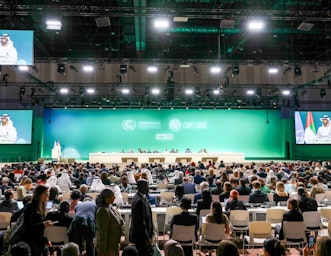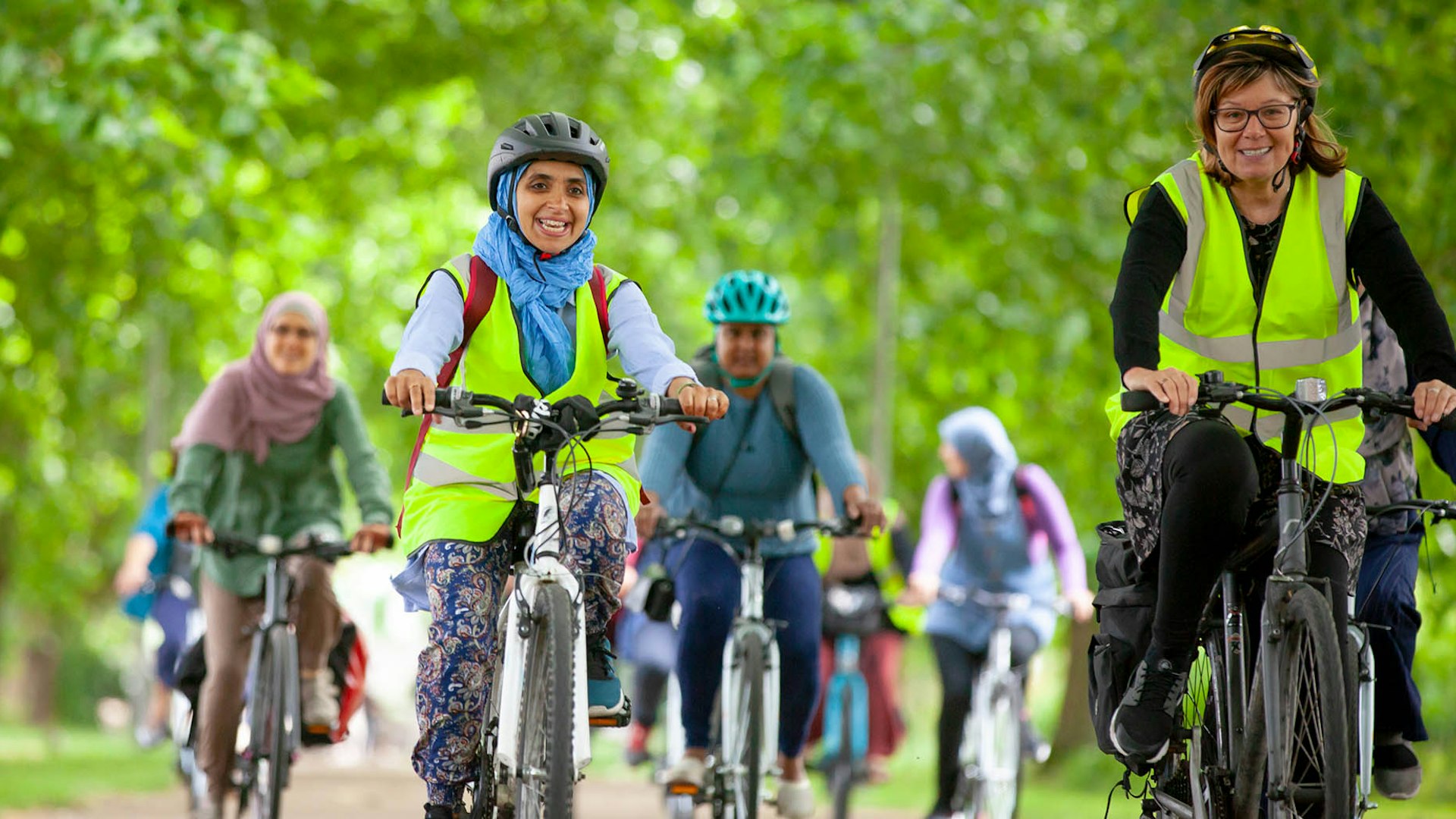
In north east London, one local authority is on a mission to make its public spaces safer, healthier and more enjoyable for all. Jane Sherry, Behaviour Change Project Manager for Waltham Forest, outlines their successes to date and explains how barriers can be overcome.
Originally published in our member’s magazine Clean Slate 117 – Autumn 2020
Waltham Forest, a diverse and vibrant borough, is growing faster than any other London borough. To ensure this is sustainable, we have invested £50 million since 2014, including £27 million of ‘Mini-Holland’ funding from Transport for London (TfL), to improve infrastructure and encourage a modal shift from private cars to walking and cycling.
Our resulting ‘Enjoy Waltham Forest’ programme continues to focus on a range of infrastructural and behaviour change initiatives to ensure freedom, choice and healthier lifestyles for all our residents. We have developed 33 infrastructural schemes which have been introduced in conjunction with tailored behaviour change projects, aiming to enable residents, businesses and visitors to the borough to feel confident, knowledgeable and safe in using our new and innovative infrastructure, and encourage them to live more sustainable lives.
Infrastructure
Over 30km of direct and safe cycle routes have been introduced to support north-south and east-west movements; these are either fully or semi-segregated from road traffic, and provide key links to workplaces and social opportunities. Our flagship cycle route, Lea Bridge Road, was completed in October 2019 and has seen a £15 million transformation with the introduction of 8km of continuous segregated cycle tracks and two new bridges to increase capacity for people walking and cycling.
In residential areas 51 modal filters (e.g. bollards, planters or mini parks) have been introduced to create low-traffic neighbourhoods, making roads quieter, safer and more pleasant for sustainable travel. To reinforce pedestrian priority, we’ve created 145 ‘Copenhagen-style’ blended crossings alongside 62 pedestrian and cycle shared crossings. We’ve also introduced 31 new accessible urban green spaces (known as ‘pocket parks’) and planted over 700 new trees, creating a greener, more attractive and more fun environment for our residents to spend time in.
We have created a network of 430 bike hangars, providing 2,580 cycle parking spaces on residential streets, and 540 secure cycle parking spaces in our seven underground and overground station Cycle Hubs.
Behaviour change
To nurture the borough’s growing cycling and walking culture, a range of behaviour change initiatives have been introduced alongside a comprehensive marketing and communications strategy to promote them.
We’ve trained over 20,000 residents in cycle skills, provided 600 free cycle loans, and have supported a wide variety of community groups and places of worship in providing specialised cycle training, including working with two Muslim women’s cycling groups.
In February 2019 we launched our Community Walking and Cycling Fund in which we supported 10 organisations to deliver active travel based projects in their local communities. These included a BMX club for children, the StowSteppers walking challenge which was led by our local MP Stella Creasy, a biking with babies project, and Walk and Talk for Your Life, which was a research project that looked at the impacts of group walks and interactive health discussion sessions on older adults’ feelings of loneliness.
These projects have been vital in encouraging and enabling people to walk and cycle, inspiring people to use the new infrastructure for journeys they previously would have made by car.
Co-benefits realised so far
With benefits being so far-reaching, it’s hard to measure the impact of these schemes. However, external research has indicated very positive results so far, such as life expectancy increasing by 1.5 months for children born and living in the borough since 2013.
King’s College London’s Environmental Research Group undertook research and modelling in spring 2018 to predict the benefits of the programme. Using air quality data from 2013, researchers modelled the expected change in the exposure to air pollution experienced by pedestrians and cyclists in 2020, with findings indicating that on popular cycling routes exposure of Nitrogen Dioxide (NO2) is predicted to reduce by up to 25%, and fine particulate matter (PM2.5) by up to 13%.
Prioritising our High Streets
The programme has focused on improving two local high streets in the borough:
Orford Road in Walthamstow and Francis Road in Leyton. Francis Road is a key north-south
route and has around 20 business units and three primary schools located on it, along with a mix of residential properties.
It was in need of change, with over 5,000 vehicle movements per day, congestion and speeding, and footways blighted by parked cars. The area also suffered from a high number of vacant units and a lack of diversity in retail offer that failed to meet the demands of its changing population.
Introducing a timed pedestrianisation of the street allowed businesses to receive deliveries in the morning and evening, leaving the road free during the day for walking, cycling and generally enjoying the improved environment. The local businesses and residents have taken ownership of Francis Road and have really embraced their new public space.
The road has been featured in Time Out and City AM as a new destination in London, and with the new businesses that have opened up, including new restaurants, florists and even a book shop, it’s attracting a new generation of locals and visitors alike.
Many of these new businesses are now using ZED, our zero-emission delivery service that we run in partnership with ZEDIFY, to make and receive their deliveries, which really highlights that they have embraced this new sustainable approach to business.

Overcoming challenges and looking to the future
Delivering this programme hasn’t been easy and we have had to overcome a range of barriers to get to where we are today.
One of our main barriers has been overcoming resistance from the local community.
When we opened our first completed scheme, Orford Road, back in September 2015, we originally planned to celebrate the launch by holding a big street party, encouraging businesses to put stalls, tables and chairs outside. However, this couldn’t take place owing to protestors flooding the road demanding that we open the streets to allow them to drive to the High Street again. They even brought along a coffin to signify the death of the area!
Despite this inauspicious start, we’re glad to confirm that this area is a hive of activity, with a great atmosphere and many thriving local businesses. We’ve overcome negativity by adapting and enhancing our engagement approach to ensure that we listen to and capture concerns and ideas from the local community from the start, and use tools such as Commonplace – an online community engagement platform – to work in a transparent and interactive way.
Another challenge that we have faced is the differing cultural and travel behaviours across the borough. The south of the borough is predominantly flats that attract young professionals and families whereas the north is more detached housing with off-street parking and poorer access to public transport. These factors coupled with differing cultures and demographics mean that we can’t introduce the same initiatives everywhere and expect to see the same take-up of walking and cycling.
It can be easy to just design projects for people like yourself without fully taking into consideration accessibility and cultural or personal requirements, so I would urge all councils to design for everyone. For example, researching local community groups who might be interested in providing their perspectives is one way of ensuring that any changes made will benefit a wide range of people and be accessible to all.
A third challenge that we are still working to overcome is funding – the more schemes that we implement and the more that residents see the benefits, the more we are asked to do. Whilst this is a fantastic position to be in, we no longer have the Mini-Holland funding, and like most other local authorities are facing financial pressures in light of Coronavirus. Aligning projects with other Council priorities can help provide further funding for a scheme. At the same time, costs can be reduced by using lower-cost solutions to achieve the same results, such as using planters in place of bollards as modal filters or choosing semi-segregated over fully segregated cycle lanes.
Making radical changes to road layouts takes bravery, and you need strong leadership to make sure schemes are completed and embraced by your local communities. We have been very lucky to have had a great team who have worked tirelessly over the past six years, and now have a wide range of community members who are championing schemes themselves and pushing us to do even more, which is a great position to be in.
About the author
Jane is the Behaviour Change Project Manager at Waltham Forest Council where she has worked since 2014. Jane’s work focuses on encouraging and enabling everyone to walk and cycle where possible whilst enjoying the unique culture and green spaces of the borough.
- Zero Carbon Britain
- Climate Change
- Transport
Related Topics
Related Pages
Related news


Scaling up climate action in your community
12th February 2024
COP28 – critical steps, but much further to go before we reach safer ground
18th December 2023
COP28 – a critical milestone
30th November 2023
Past Webinar: Tried and tested solutions for a green recovery – transport
Email Sign Up
Keep up to date with all the latest activities, events and online resources by signing up to our emails and following us on social media. And if you'd like to get involved and support our work, we'd love to welcome you as a CAT member.

